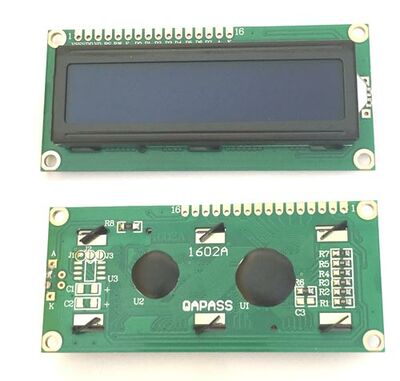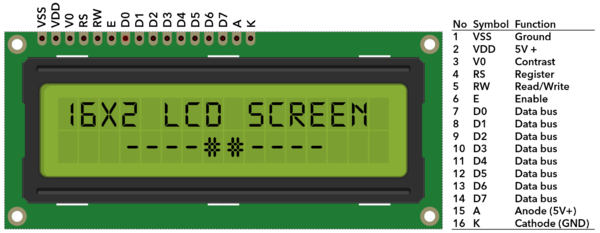Difference between revisions of "STM32 I²C LCD"
Jump to navigation
Jump to search
| Line 3: | Line 3: | ||
LCD Display modules are readily available and they are dirt cheap (< $2 typically). They come in different "resolutions" typically expressed as number of characters and number of lines. Common ones are 1602 (16 characters in 2 lines) and 2004 (20 characters in 4 lines). | LCD Display modules are readily available and they are dirt cheap (< $2 typically). They come in different "resolutions" typically expressed as number of characters and number of lines. Common ones are 1602 (16 characters in 2 lines) and 2004 (20 characters in 4 lines). | ||
| − | The modules are interfaces by an 8 bit parallel data bus (can be operated in 4 bit mode) and | + | The modules are interfaces by an 8 bit parallel data bus (can be operated in 4 bit mode) and some control signals: |
[[File:116X2-LCD-Pinouts.png|600px]] | [[File:116X2-LCD-Pinouts.png|600px]] | ||
| + | |||
| + | These can of course be "driven" by an STM32 by interfacing these pins directly, but at a minimum that would tie up 8 [[GPIO]] pins for one display. | ||
== Miscellaneous Links == | == Miscellaneous Links == | ||
Revision as of 03:47, 2 June 2022
LCD Display modules are readily available and they are dirt cheap (< $2 typically). They come in different "resolutions" typically expressed as number of characters and number of lines. Common ones are 1602 (16 characters in 2 lines) and 2004 (20 characters in 4 lines).
The modules are interfaces by an 8 bit parallel data bus (can be operated in 4 bit mode) and some control signals:
These can of course be "driven" by an STM32 by interfacing these pins directly, but at a minimum that would tie up 8 GPIO pins for one display.

